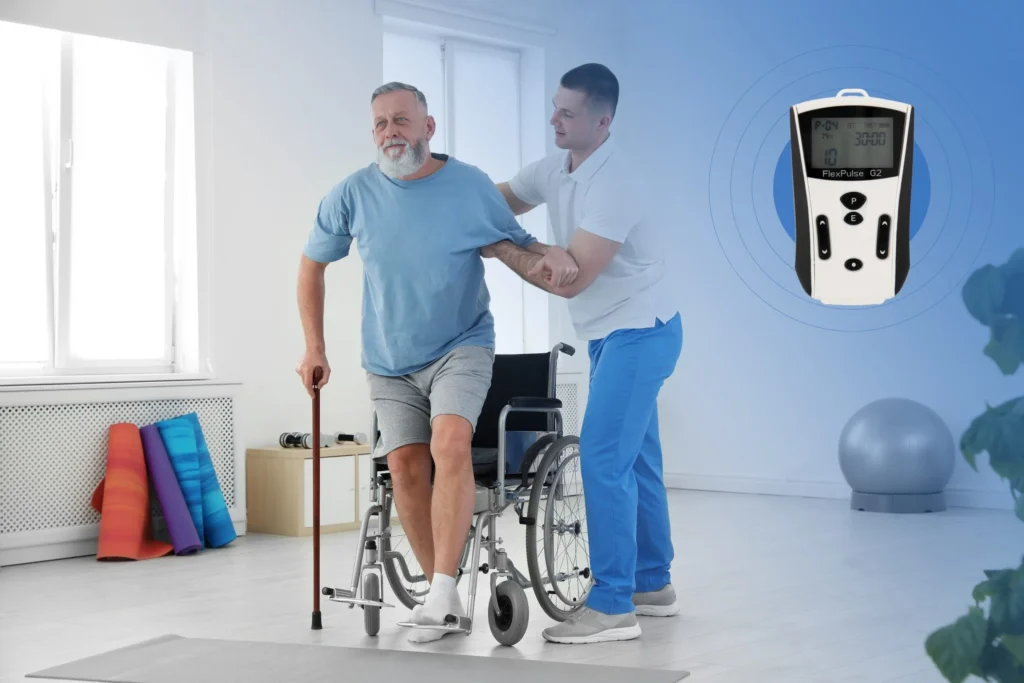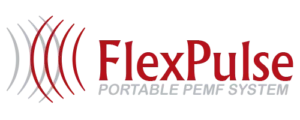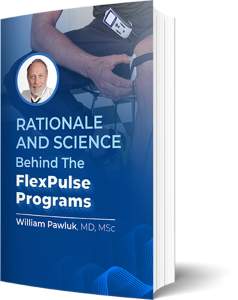
Going downstairs PEMF for Stroke Rehabilitation
Each year, approximately 795,000 people are impacted by stroke, according to the Stroke Foundation, which calls stroke the leading cause of serious, long-term disability in the United States. Stroke occurs either when blood flow to the brain is blocked (ischemic) or something causes bleeding in the brain (hemorrhagic).
Stroke most often impacts the older population; only about one-quarter of strokes occur in those under 65. There are many risk factors for stroke, including high blood pressure, tobacco use, diabetes, heart disease, genetics, weight and activity level, and some medications. Ischemic strokes are most often caused by plaque buildup or dislodged plaque coming from other vessels below the brain. Hemorrhagic strokes are most commonly caused by anticoagulants, including aspirin and ibuprofen.
The impact of stroke can be mild or seriously debilitating. Speech, vision, mobility, mood and cognitive function can all be impaired after stroke.
An impressive body of research has shown the positive impact of TMS therapy (PEMF applied to the brain) on stroke rehabilitation. PEMF therapy has a neuro-regenerative effect when applied to the brain. Application of PEMF therapy stimulates cells, neurons and damaged tissues resulting from stroke to promote accelerated recovery. Thus, using PEMF for stroke rehabilitation can make a big difference.
Neuroplasticity and PEMF
Improving neuroplasticity, the nervous system’s ability to change brain function in response to extrinsic or intrinsic stimuli, is critical in stroke rehabilitation. Improved neuroplasticity has a positive impact on memory, thinking, mobility and speech impairments that are a result of stroke. A randomized trial published in 20121 concluded that magnetic field therapy targeted at the brain improved neuroplasticity as well as rebalancing motor capabilities. Additional research in 2018, conducted by six prominent scientists in Poland, demonstrated that extremely low-frequency PEMF therapy made post-stroke rehabilitation more effective by improving neuroplasticity.2Research on PEMF for Stroke Rehabilitation
While research has been conducted on the use of pulsed electromagnetic fields for stroke recovery for several decades, in the last ten years that research has exploded. Dozens of studies just within the past five years have reaffirmed the positive benefits of PEMF therapy on conditions resulting from stroke, including balance and movement, aphasia, depression, and cognitive function. PEMF therapy has been shown to improve blood circulation3 and cellular oxygenation4, both of which impact the processes and functions of the brain. Earlier research on rTMS in stroke patients focused on short-term impacts, but newer research has also demonstrated long term benefits. One study conducted in 20095 placed 48 patients with acute ischemic stroke into three groups. Two groups received actual TMS (3Hz and 10Hz) over the motor cortex of the affected brain hemisphere daily for five consecutive days, while the third group received sham stimulation. The TMS treatment produced greater improvement in functioning that remained evident at the one year follow-up. Other research shows strong positive benefits of PEMF for stroke rehabilitation even five or ten years after the event. Stroke rehabilitation can be a long, arduous process. Brain entrainment through the use of PEMFs boosts the brain’s ability to learn and recover, allowing for faster results. Health professionals involved with helping with stroke should explore the benefits of using PEMF therapy in conjunction with more traditional approaches.FlexPulse for stroke rehabilitation and prevention
Research using human subjects has repeatedly shown strong motor and cognitive rehabilitation in stroke patients with no adverse side effects. TMS used in this research is applied to the brain at high intensities for short periods of time. It is reasonable to expect that PEMF therapy using a lower intensity machine, such as the FlexPulse device, for longer periods of time can have similar results. Daily use of PEMF therapy may also delay or avoid another stroke event. PEMFs can decrease inflammation, improve circulation, and reduce the risk of clot and plaque development in blood vessels that can cause strokes. Owning a portable PEMF device allows those recovering from stroke the flexibility of treatment at their own convenience for extended periods of time. This is much less costly (and requires far less time investment) than repeated visits to a clinic for high intensity treatment. Flexpulse, the world’s most powerful and versatile battery operated wearable PEMF machine, offers maximum value and flexibility. With a peak intensity of 280 Gauss, the Flexpulse can be used for extended amounts of time, even overnight. And because the applicator pads are lightweight and easy to apply to any area of the body, it can be used anywhere you go. PEMFs in research studies are typically 10 Hz for what is considered “high” frequency rTMS and 1 Hz for “low” frequency rTMS. Flexpulse devices offer six programs with frequencies ranging from 3 Hz to 1000 Hz. The FlexPulse is an affordable option for continued PEMF therapy for stroke rehabilitation and prevention. With a 30-day satisfaction guarantee and a 2-year International warranty, FlexPulse is a no-risk, safe addition to your stroke rehabilitation plan. Daily use of the FlexPulse can continue to improve damage caused by a stroke and reduce risk of a second stroke event, allowing you to live your best life! References:- Avenanti A, Coccia M, Ladavas E, Provinciali L, Ceravolo MG. Low-frequency rTMS promotes use-dependent motor plasticity in chronic stroke: A randomized trial. Neurology. January 2012:256-264. doi:10.1212/wnl.0b013e3182436558
- Cichoń N, Bijak M, Czarny P, et al. Increase in Blood Levels of Growth Factors Involved in the Neuroplasticity Process by Using an Extremely Low Frequency Electromagnetic Field in Post-stroke Patients. Front Aging Neurosci. 2018;10:294. https://www.ncbi.nlm.nih.gov/pubmed/30319398.
- Kim C, Wheatley-Guy C, Stewart G, Yeo D, Shen W, Johnson B. The impact of pulsed electromagnetic field therapy on blood pressure and circulating nitric oxide levels: a double blind, randomized study in subjects with metabolic syndrome. Blood Press. August 2019:1-8. https://www.ncbi.nlm.nih.gov/pubmed/31394939.
- Bragin D, Statom G, Hagberg S, Nemoto E. Increases in microvascular perfusion and tissue oxygenation via pulsed electromagnetic fields in the healthy rat brain. J Neurosurg. 2015;122(5):1239-1247. https://www.ncbi.nlm.nih.gov/pubmed/25343187.
- Khedr EM, Etraby AE, Hemeda M, Nasef AM, Razek AA. Long-term effect of repetitive transcranial magnetic stimulation on motor function recovery after acute ischemic stroke. Acta Neurol Scand. 2010 Jan;121(1):30-7. Epub 2009 Aug 11

